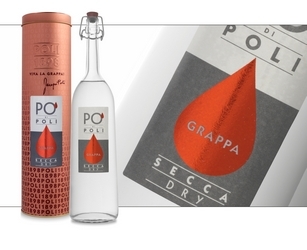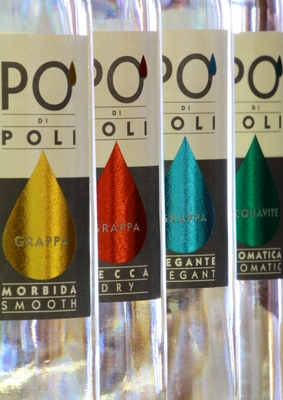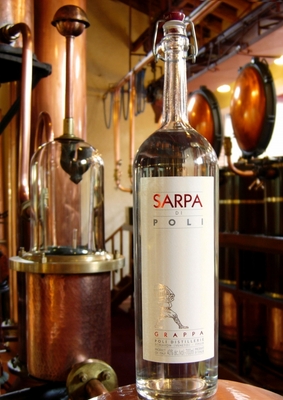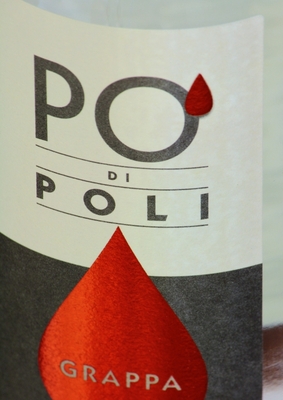Grappa, dry or smooth?
Often customers say to the waiter: “give me a dry Grappa” or “I prefer a smooth Grappa…”
But what does that mean and how can we distinguish a ‘dry’ Grappa from a ‘smooth’ Grappa?
We are dealing here with a so called ‘double’ perception because it affects both the nose and the mouth. It is usually attributed to the sense of smell because you feel it with your nose, but it is actually a false smell, rather a tactile sensation that is perceived in the oral cavity during tasting.
A ‘dry’ Grappa offers itself to the mouth with some volatile tones bordering on pungency and, even when harmonious, it is not sweet at all, but tends to give a clear tactile sensation, crackling, almost spiky.
A smooth Grappa, instead, is perceived in the mouth as rounder, more harmonious, spherical, almost sweet. You must be careful though, softness is not to be confused with sweetness.
It is certainly not by adding sugar that you can transform a pungent and aggressive Grappa into a smooth Grappa. This way you will obtain a disharmonious Grappa at the most.
The characteristics that distinguish a ‘dry’ Grappa from a ‘smooth’ one derive from the vine of origin, the way the grape marc is handled and the distillation is performed.
Certain vines transfer to the distillate a wealth of acids content, leading to a ‘dry’ sensation during tasting. Other vines, however, yield a lower acids content, which results in a more ‘smooth’ perception.
During the last thirty years the handling of grape marc from cellar to still has been much improved, in order to carefully avoid oxidation, with the formation of consequent undesired volatile compounds, and the loss of scents and aromas. Moreover, a greater amount of ‘head’ and ‘tail’ is now discarded during distillation, to obtain a less pungent and cleaner ‘heart’ of the distillate.
Today’s Grappa is definitely less aggressive than the Grappa of the past. It should be said, however, that a certain pungency is typical of Grappa, due to its high alcohol content.
For this reason Grappa should be served cold, in a tulip glass; it is best to avoid high serving temperatures and glasses with a narrow chimney that emphasize the pungency. It must be pointed out that the sensitivity to Grappa pungency varies between individuals. The same Grappa can be perceived as ‘dry’ or ‘smooth’ by different people depending on their subjective evaluation criteria.
PO’ di Poli Secca is a Grappa defined as ‘dry’ following the evaluation of the distillery’s technical staff. It is, however, a harmonious distillate, well-structured, reminiscent of freshly mown grass, with notes of red flowers, geranium, rose and violet, typical aromas of the vine it is obtained from, Merlot.
PO’ di Poli Secca presents no roughness or aggressiveness, yet it gives a heat-like tactile sensation that envelops the mouth and makes your tongue click.
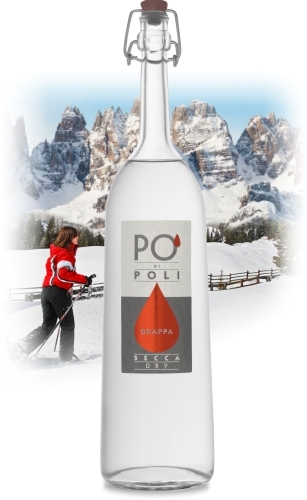
Grappas
Young Grappa
PO' di Poli Secca / Dry
Invigorating as a hike on the mountains in winter.
Young Grappa, flowing-steam distilled.
Its aroma recalls a basket with red grapes, some strawberries, blackberries, blueberries and currants.
Find out more Watch
Watchthe video
Distillates
Features
Raw material: Merlot
Production method: artisanal distillation, in small lots, with a discontinuous copper still provided with steam pots
% Alc - Content: 40% Alc./Vol - 700 ml
Service: at temperature of 10/15 °C - 50/59 °F in a tulip-shaped glass
Packaging: metal tube
